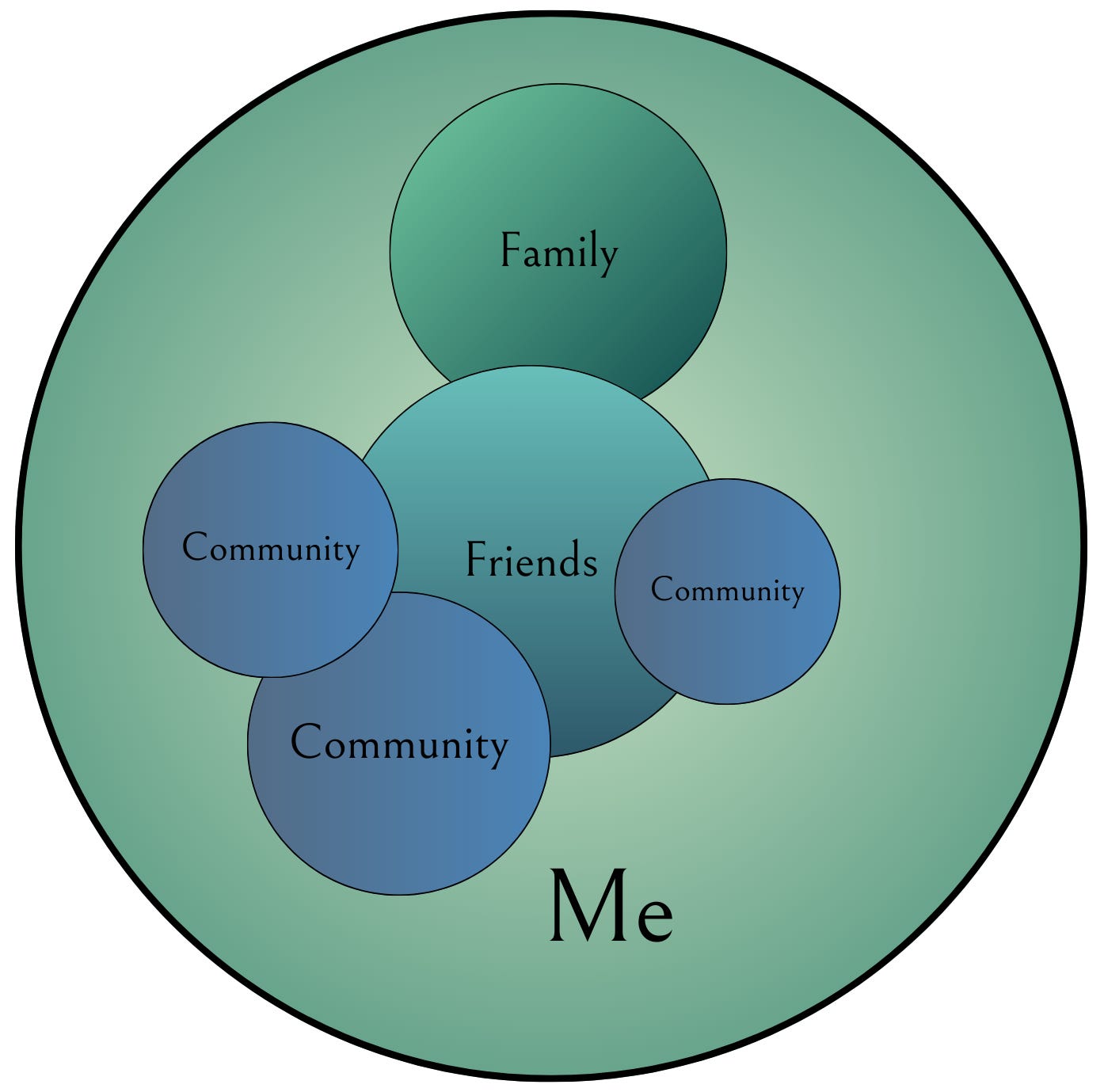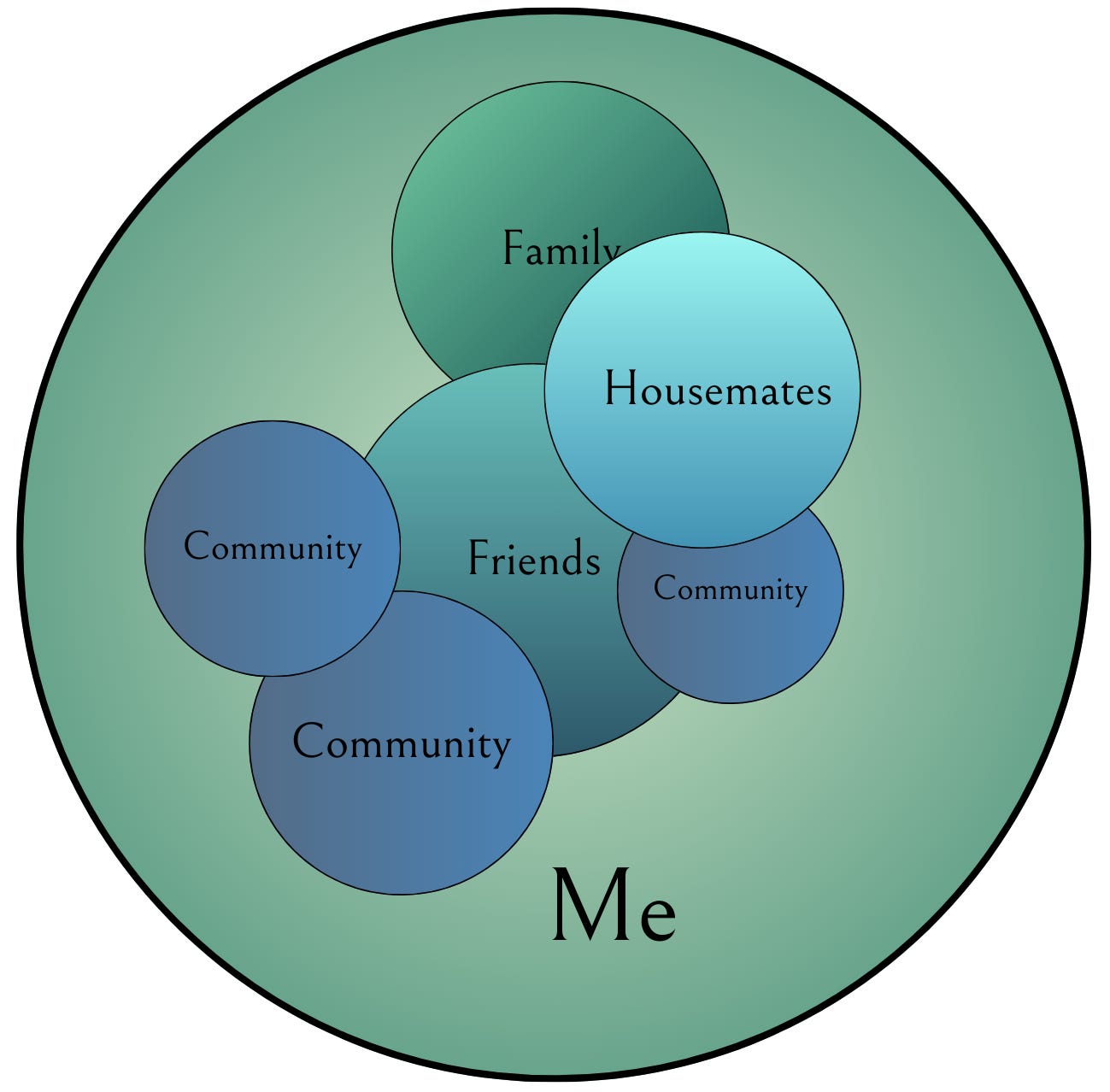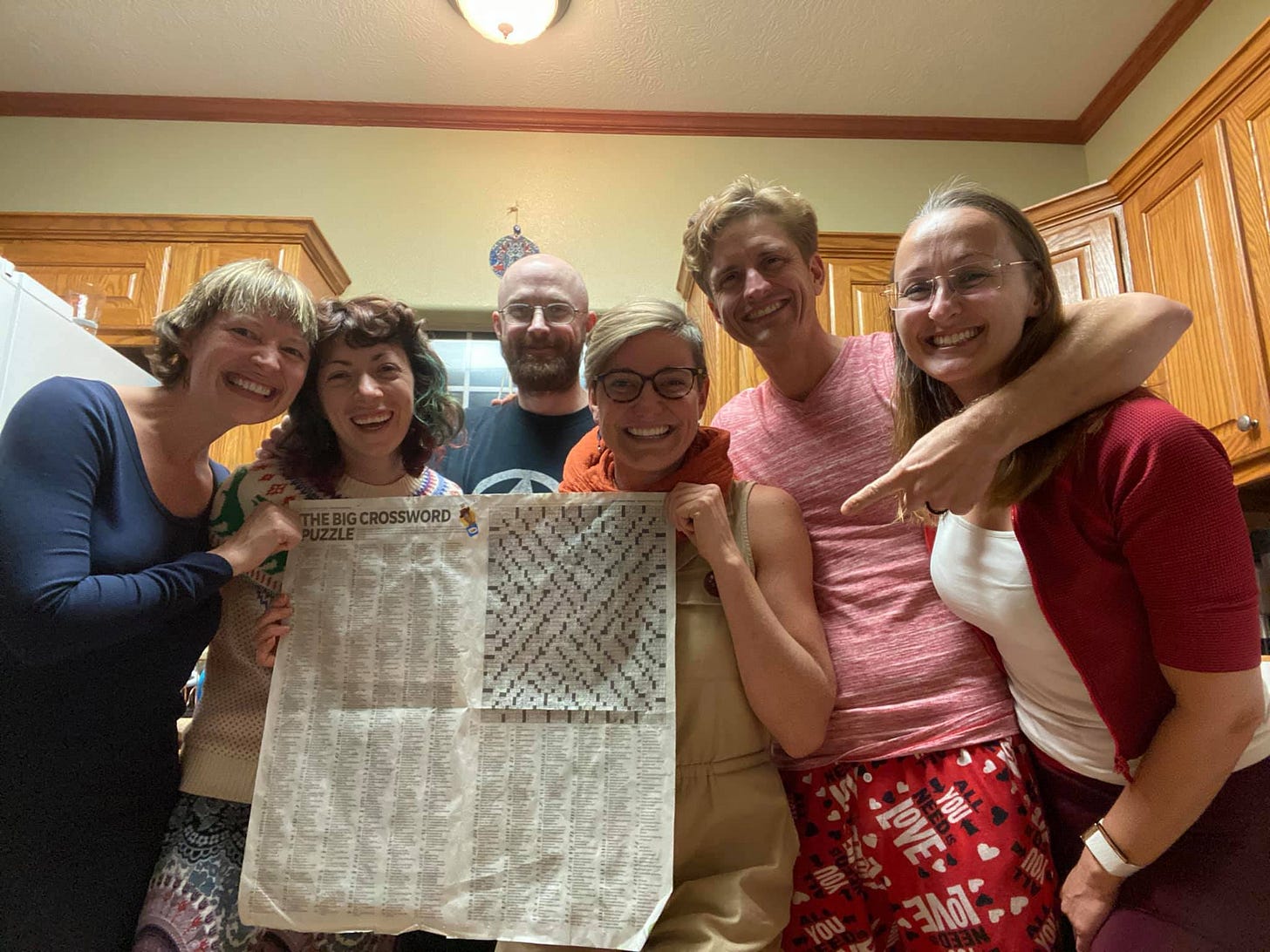The Ties That Bind
Finding family in an atomized world
Once upon a time, our family was our home.
We lived with parents and grandparents, uncles and aunts. Our selves were inextricable from our clan. They were who we worked with, believed with, relied on. If anything happened to one member of the family, the rest would close ranks around them.
Now - in the individualistic Western world, and with the memes of self-determination of self-sufficiency creeping even past its borders - we no longer have such family bonds. Even if we are close to our blood, we often live in different places. Our families are smaller, impossible to be a sole sense of support.
So, we turn to friendships, and community. We try to make them our home, our “friend-family”. This is a beautiful intention…but it runs into problems.
For instance: an experience I often had in my Authentic Relating community is that a member would leave, and months later, I’d hear from them how hurt they felt that community members hadn’t stayed in touch or followed up. Didn’t they matter? Hadn’t they formed connections? Wasn’t this a form of family?
For instance: an experience I’ve had with friends is thinking that they were as close as family, and feeling deeply betrayed when they chose bonds of blood or partnership over our us.
The connections of this world are unstable. Instead of having a set crew to rely on, we must build what once was given.
Framily Stories
Once upon a time, I was part of a group that called itself “The Fam”.
The Fam comprised some very pretty people, many of whom were sleeping with each other. And yes…this story goes about as you’d expect it to.
The Fam grew out of a desire that each member held to have a dedicated group of friends who were as close as family. People we could spend time with and rely on. We worked on it. We had meetings and hangouts and governance processes and trips. We had a women’s group, and some of the members moved in together as well. For a couple of months, The Fam was the place to be.
Then it all fell apart. The group had unclear power dynamics. The person who had started it was de facto the leader, but he didn’t own the fact that his voice had more power than others’. Eventually, he started advocating for who should or shouldn’t be in the group. That, plus complications in the romantic structures, tore us apart.
The Fam was notable not for its dramatic implosion, but for the fact that it existed at all. That we felt such desire for community - a community that wasn’t just “let’s talk again sometime”, but dedicated to being together; something akin to family - that we would step into what was, in retrospect, a terrible structure for a group. We wanted it so badly that we ignored the quicksand beneath us.
Family, Friends, Community, or…?
I see four types of communal structures in our lives.
A Community is an entity with which you form a relationship, a distributed group of people sharing a practice or space. It contains belonging within itself. But, that belonging doesn’t stretch out of the community to you when you’re not together, unless you create individual friendships. For the most part, “The Community” will not be there for you in times of trouble.
Friends are close relationships and support that you can draw on in good times and bad. They have variable depth and reliability. They are what most of us rely on to get through life, although who we are friends with and what we do together can change based on space and situation. If we have even a few great friends in our life, I believe we are blessed. Here’s an article on keeping your friends.
Family (including partnership) is nearly always by blood or long-term romance. We can’t commit to many people this way, because it requires significant investment, and - more significant - the willingness to change one’s life for others. You know someone is family if you move for them, change jobs for them, make decisions around them, give them a kidney. Forming family with those we aren’t related to (and even, often, those we are) can be scary, because it’s a mutual trust fall.
These are not clear lines; they blur into each other. Family sometimes overlaps friendships - especially one’s husband/wife/wusband/hife/domestic partner (DP?), and sometimes siblings. Some communities overlap each other and some are distinct; most overlap with friendships. You may also have a few friends from college or whatever that aren’t in community with you.
We also have a new bubble these days - the last kind of communal structure. This one overlaps with family in most places outside of urban areas/after one’s thirties, but is expanding as housing prices rise and marriage rates fall:
Housemates or landmates are people with whom you live on a short or long-term basis. You may live in an intentional community, where some interactions and structures are planned; or a more informal arrangement. In either, co-living increases closeness largely because of the number of unplanned interactions you get with others, bumping into each other in the kitchen or living room.
Trends in household makeup have changed a lot over the past century. In 1960, 15 percent of all U.S. households were nonfamily households, and 13 percent were one-person households. As of 2017, the data looked like this:
We’re ending up with a fair amount of co-living (“Other nonfamily”), and fewer children than ever before in history. We’re turning to our friends, housemates, and community for support.
The benefit of this is that we get to choose who we are connected with. In doing so, we have space to express more parts of ourselves. Family and communities of birth generally only accept certain aspects of ourselves: the socially acceptable ones, or the ones we’ve “always been” rather than who we become as we change. Friendships, housemates, and community that we choose as we grow can each know different parts of us.
Let me make a claim, here. I believe that many if not most of us are looking for relationships in our lives that are as close as family in long-term durability, but as welcoming as friendship or community is of who we are.
Let me give you my model for how to actually create those connections.
Keep reading with a 7-day free trial
Subscribe to Sara’s Substack to keep reading this post and get 7 days of free access to the full post archives.







